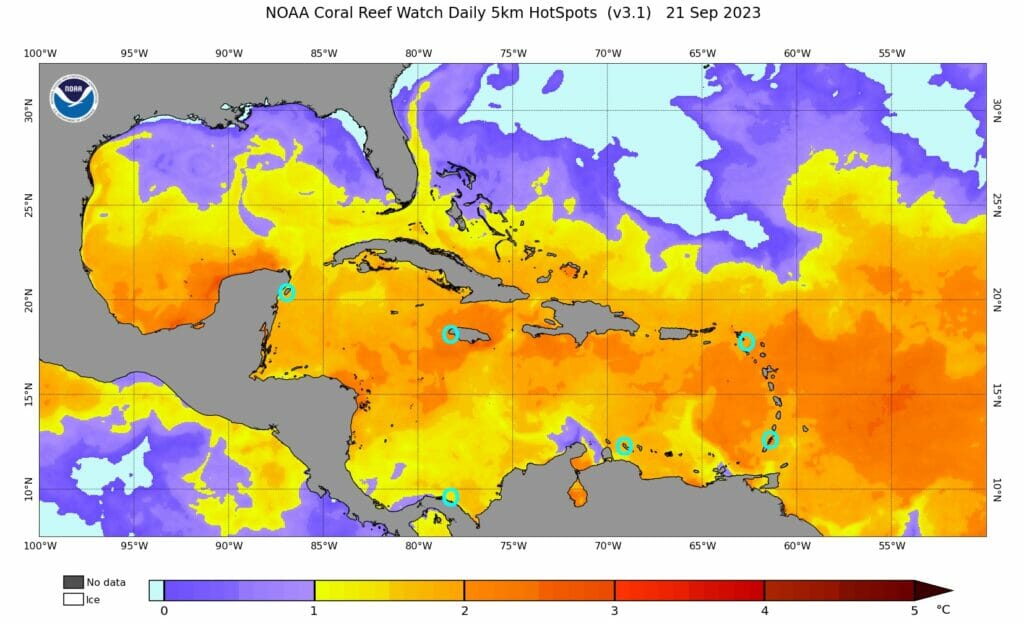Deadly coral bleaching heat wave spreads across entire Caribbean
by Tom Goreau | Sep 23, 2023 |

Above is the latest NOAA Coral Bleaching HotSpot Map based on the Goreau-Hayes method of satellite sea surface temperature analysis.
In round numbers, corals in yellow areas will bleach in about a month, while corals in orange areas will die in around a month.
The entire Caribbean is now affected by severe Coral Heat Stroke, temperatures are still rising and not likely to subside for months, unless a chain of Super-Hurricanes is triggered by the excessively hot water, which is possible later in this hurricane season.
We now have reports of near total bleaching from all over the Caribbean, and reports say that all coral fragmentation nurseries in Florida died. Many other Caribbean reefs will follow in the coming month.
We have warned this would inevitably happen ever since we invented the HotSpot method for predicting coral bleaching in the 1980s, but everyone wanted to fool themselves that they could manage reef “resilience”.
Governments deliberately ignored global warming when they could have done something, and chose to let the reefs die from heat stroke, while lavishly funding those who told them what they wanted to hear about “managing resilient supercorals”.
The Green circles show the locations of 6 active Biorock Electric Reef Coral Ark projects across the Caribbean.
Biorock reef corals have shown from 16 to 50 times higher survival than local reef corals in severe bleaching events in the Maldives, Thailand, and Indonesia due to their superior health.
After this bleaching season is finally over it will be important to compare the survival of Biorock corals with those on nearby reefs, with fragmented corals now being sacrificed on fishing lines, concrete, and PVC at great expense all over the Caribbean.
All coral reef ecosystems are doomed to extinction soon, first in the Caribbean this year, but many more will die when the currently developing El Niño peaks next year.
Biorock is the only method that saves corals from bleaching mortality. It is urgent to expand Biorock Coral Arks wherever needed to maintain biodiversity and ecosystem services until global temperatures are reduced. This does NOT mean “Net Zero” or (+1.5 C) which are equally deadly to coral reefs, it means reducing Green House Gases to preindustrial levels (T. J. Goreau, 1987, The other half of the global carbon dioxide problem, NATURE, 328: 581-582) and may require direct physical cooling methods to avoid catastrophic overshoot.
